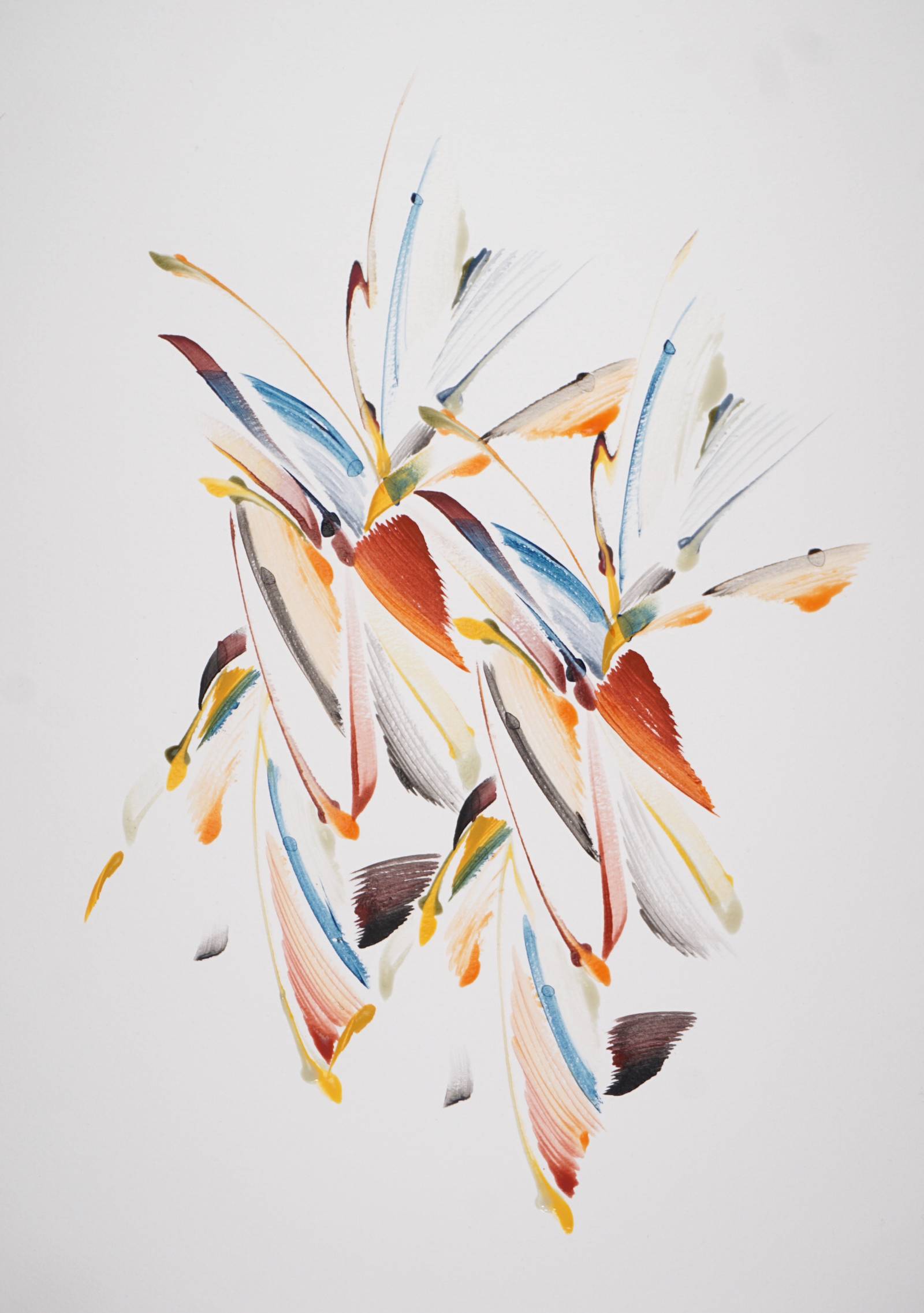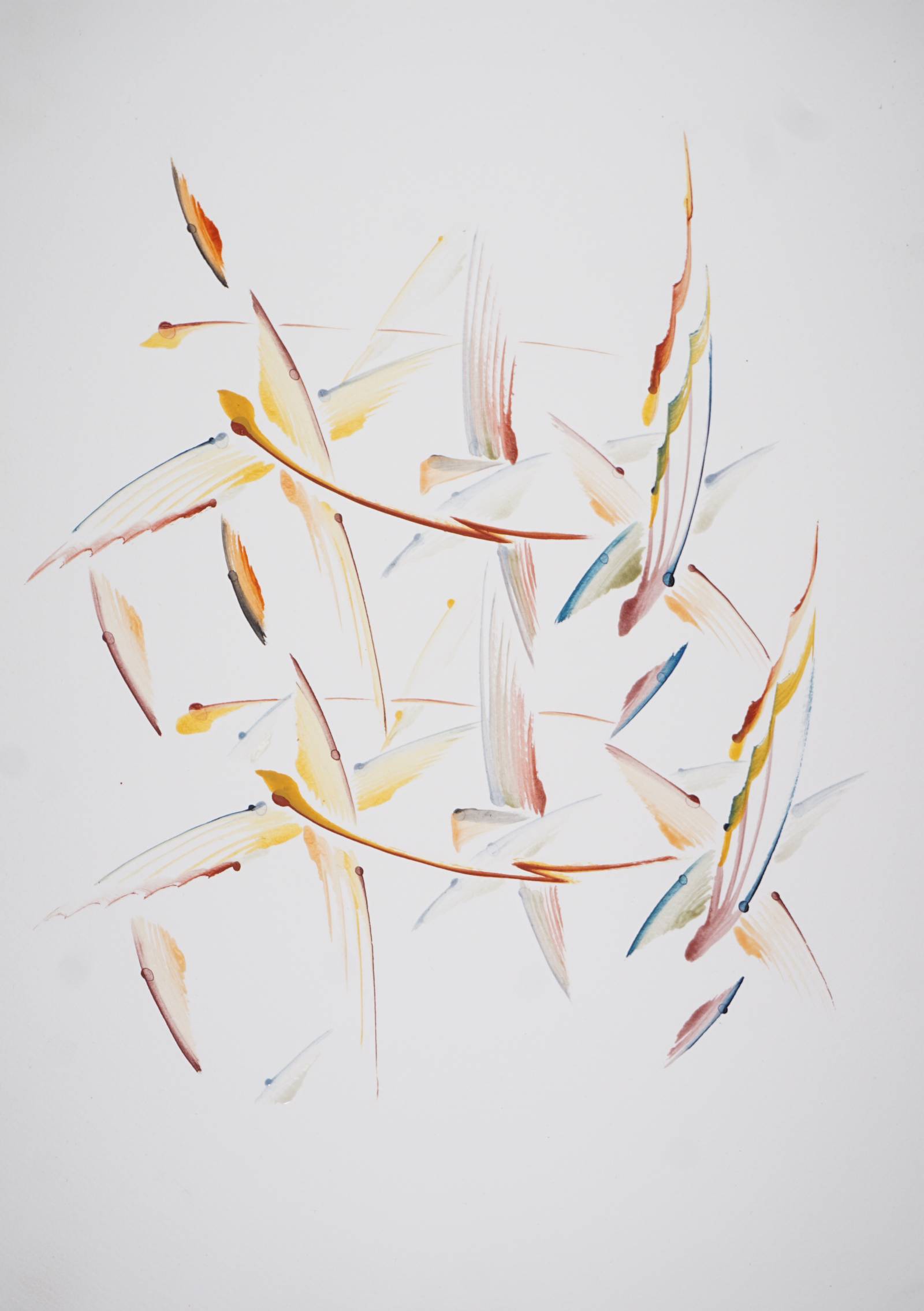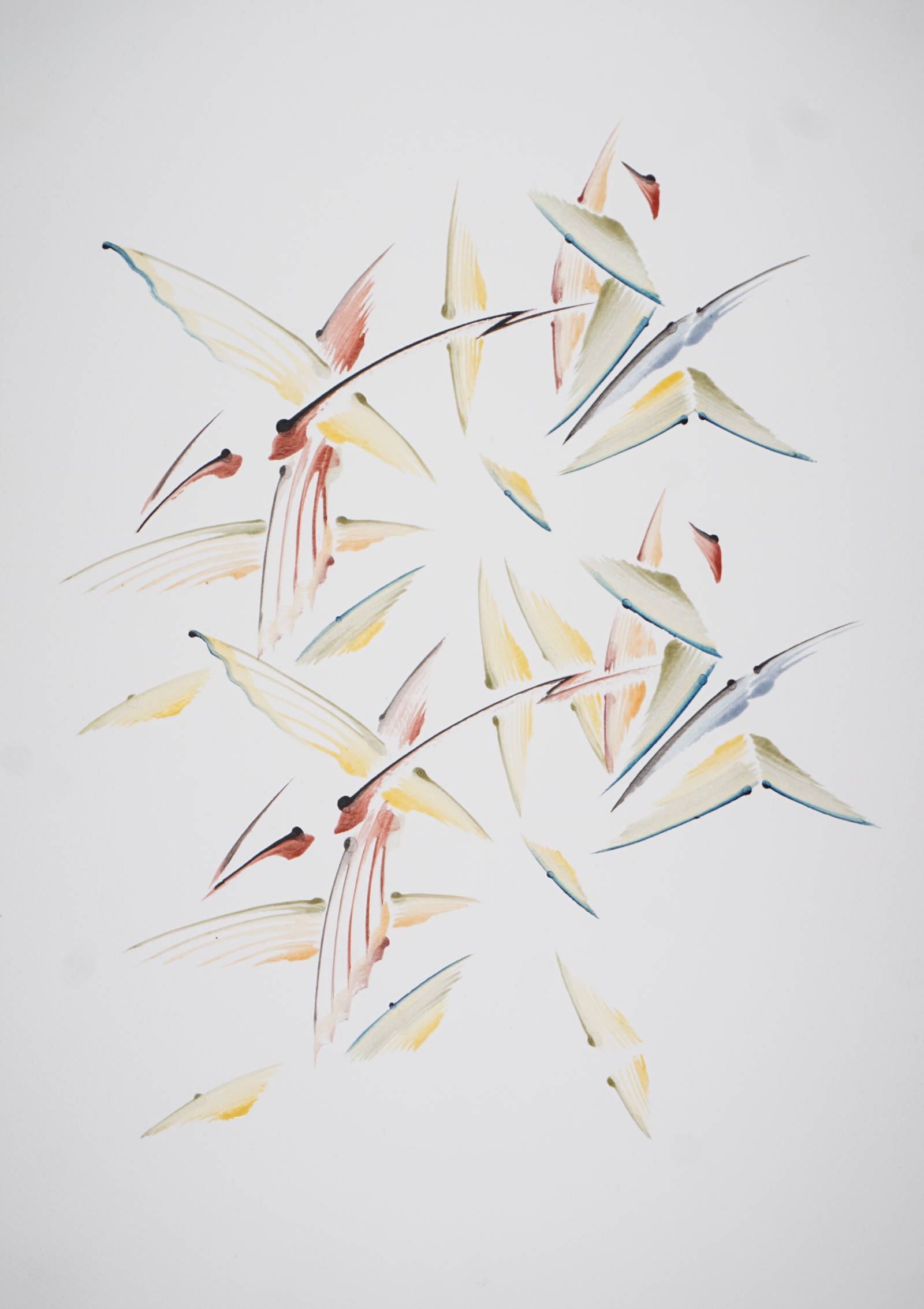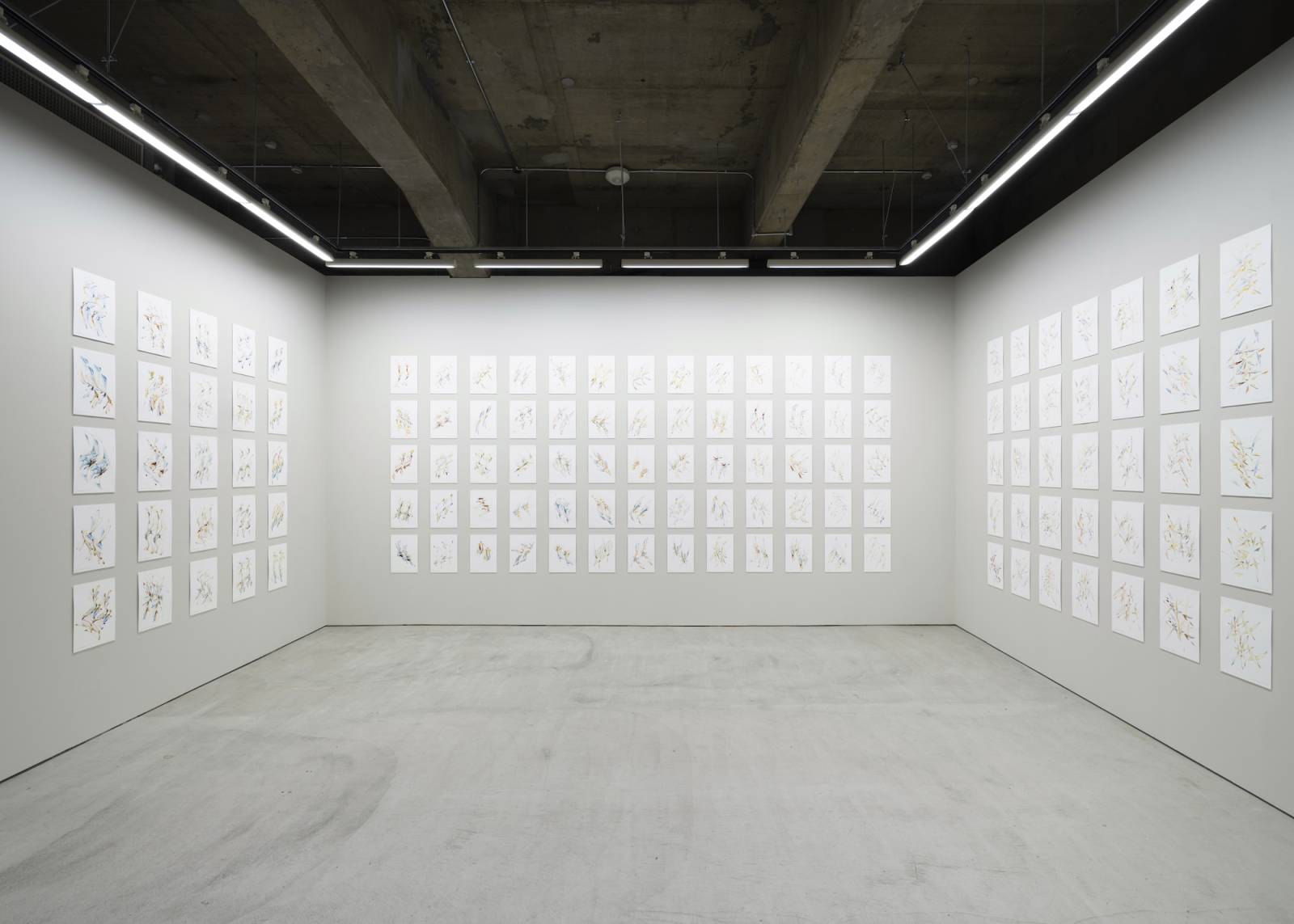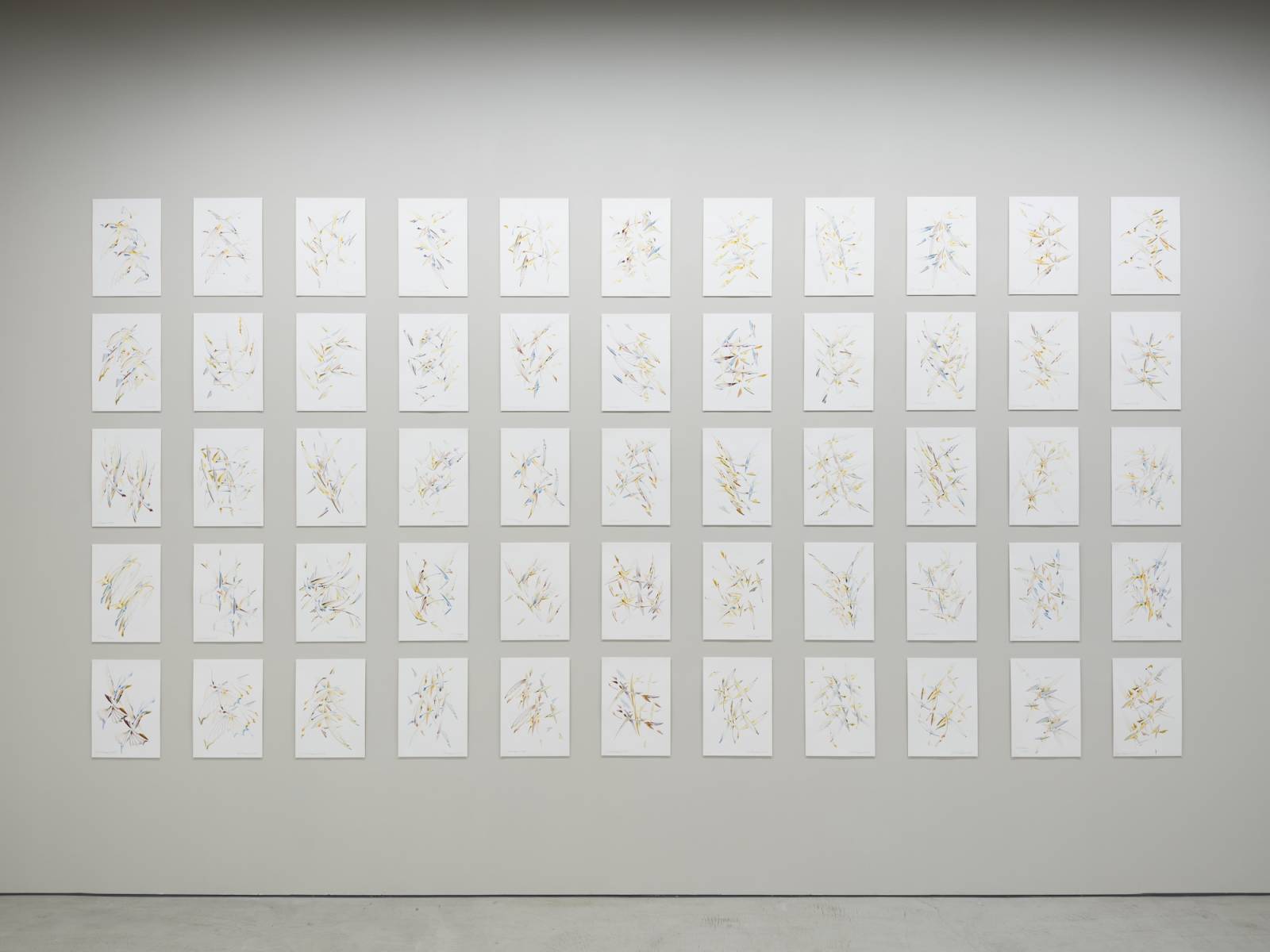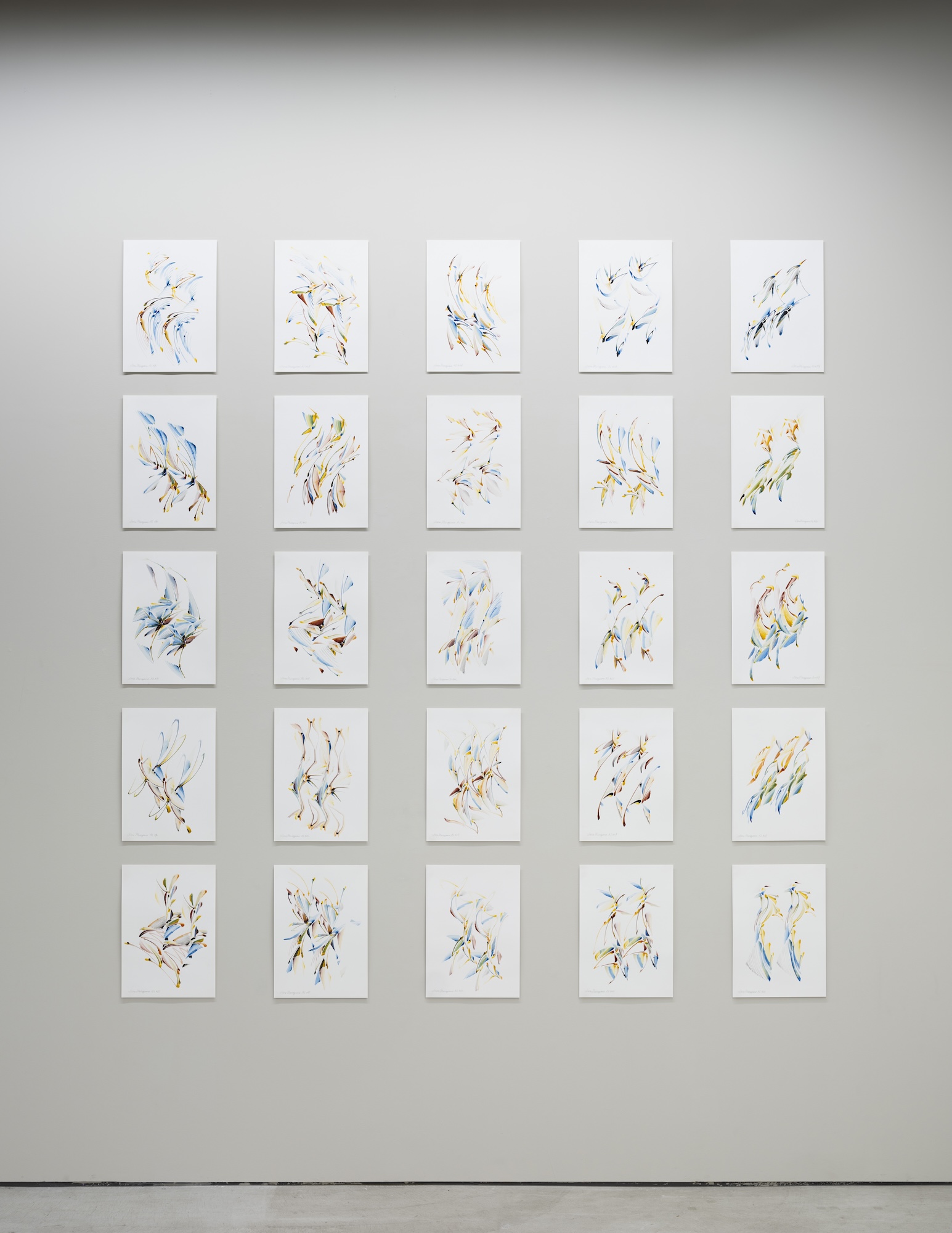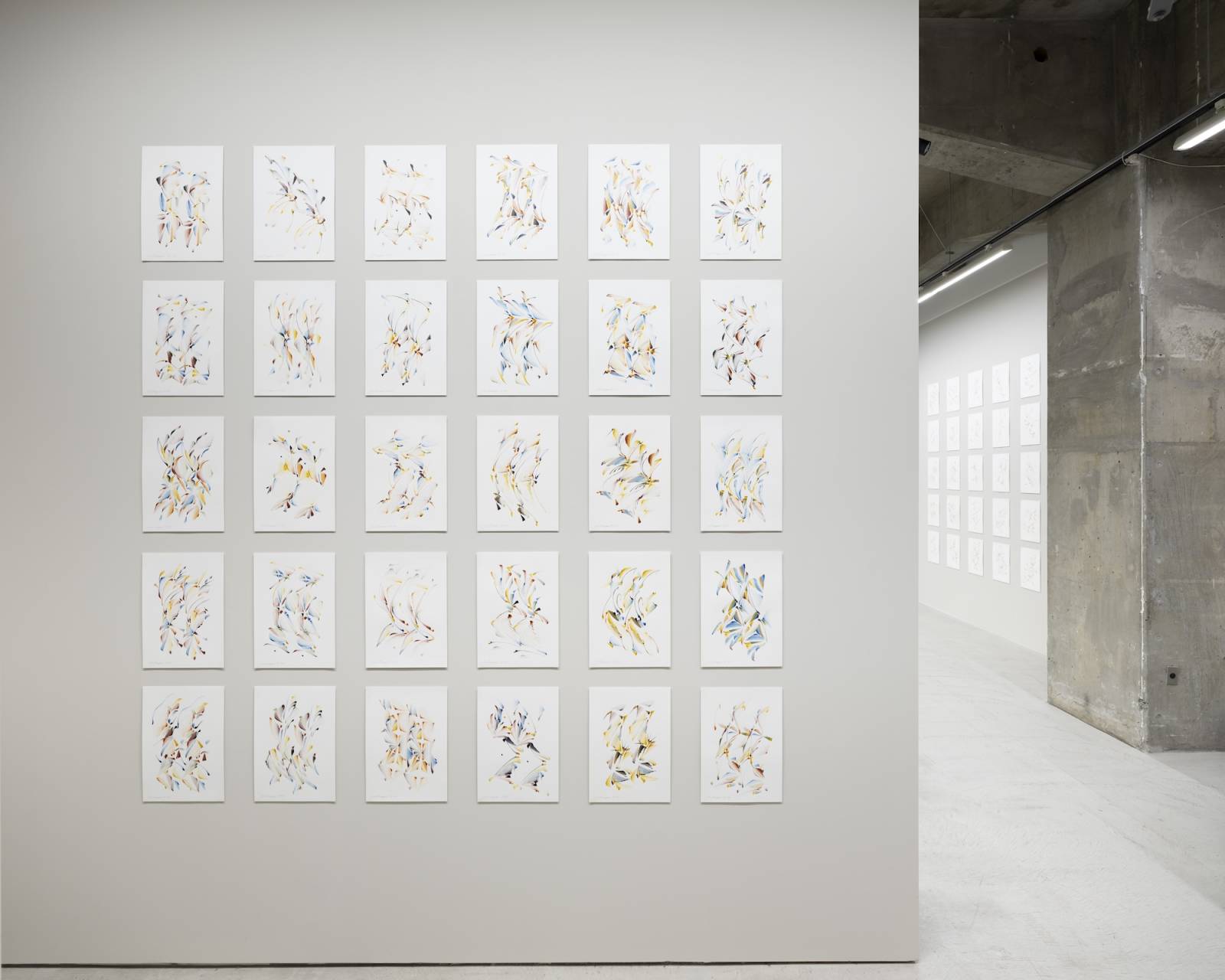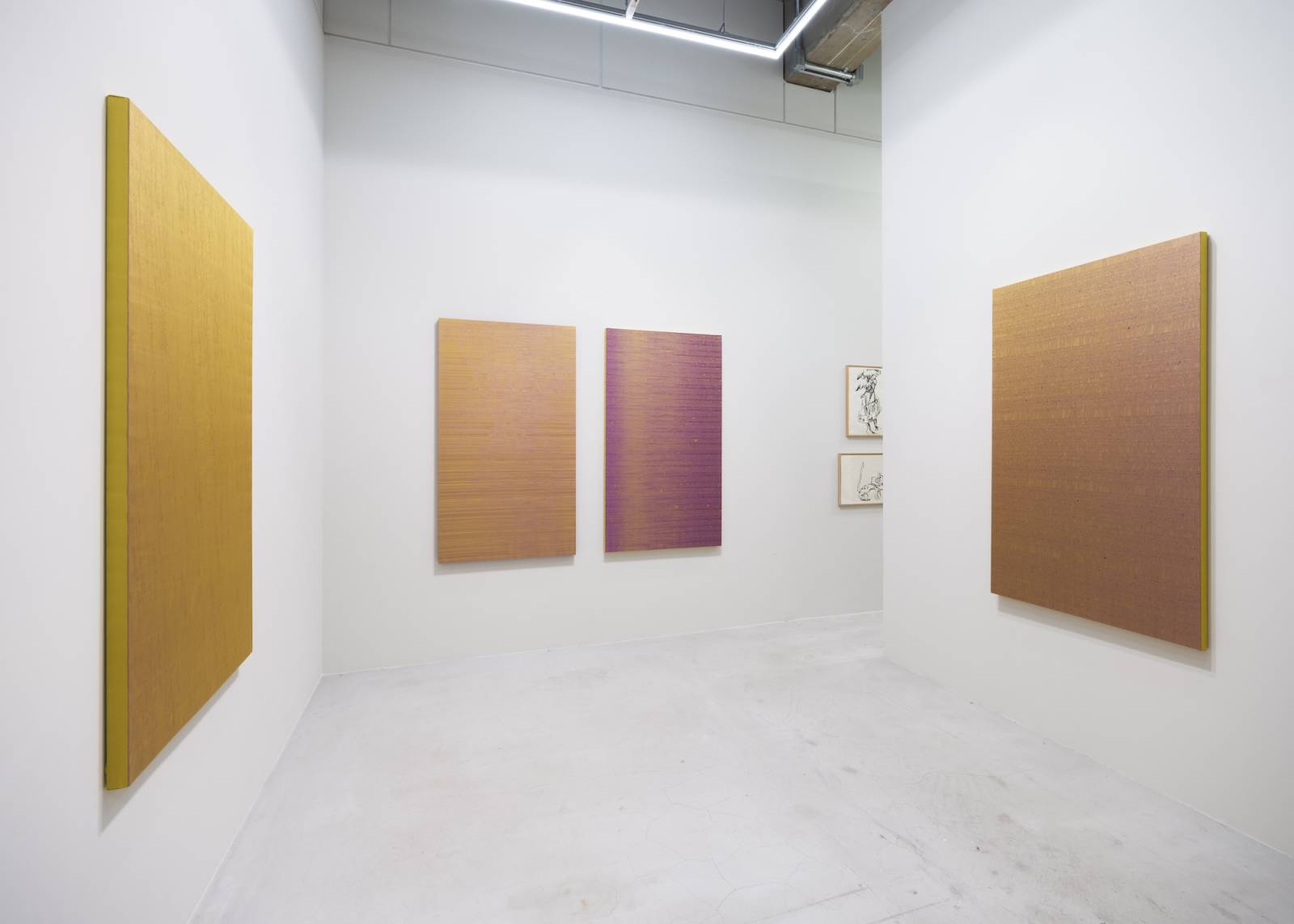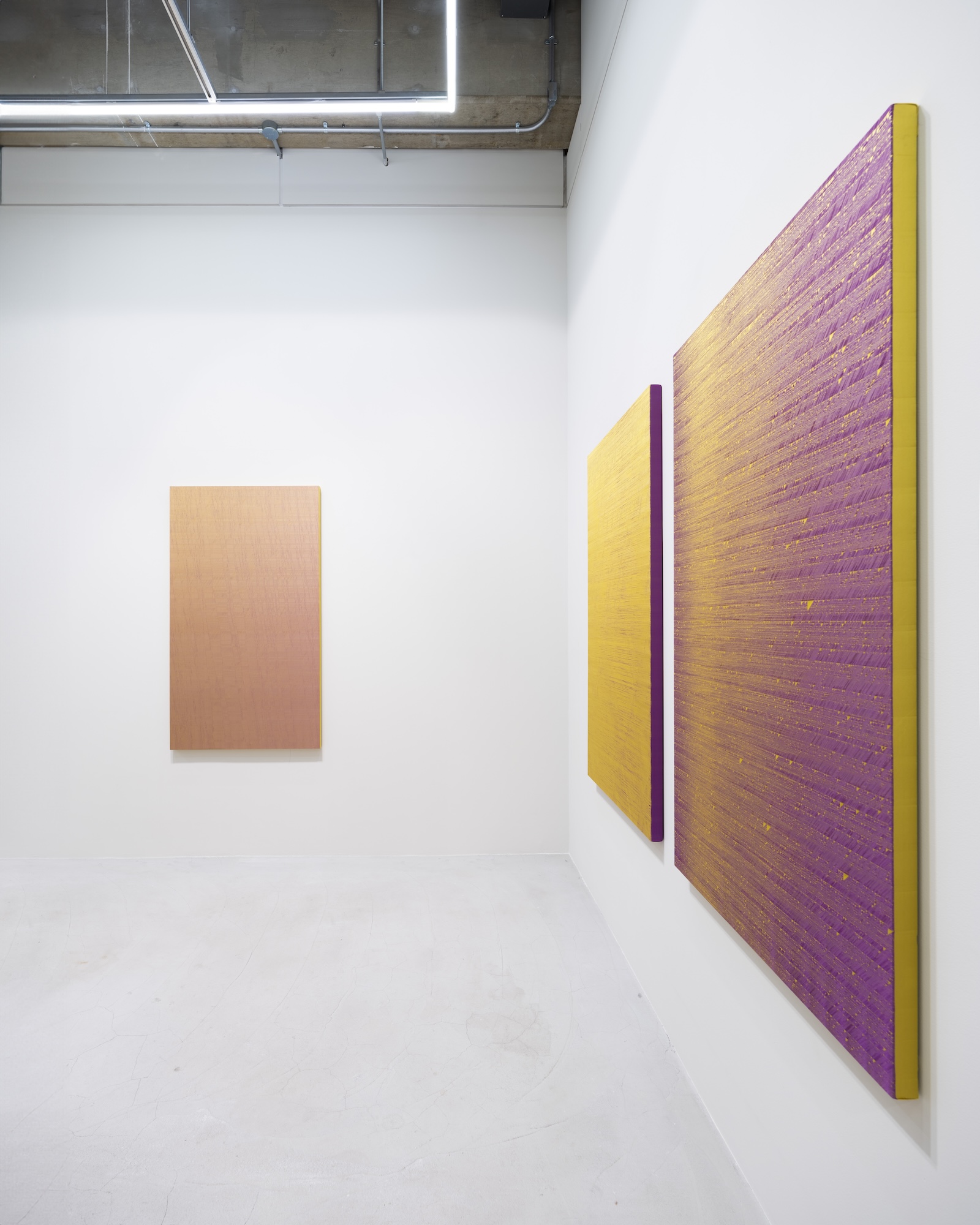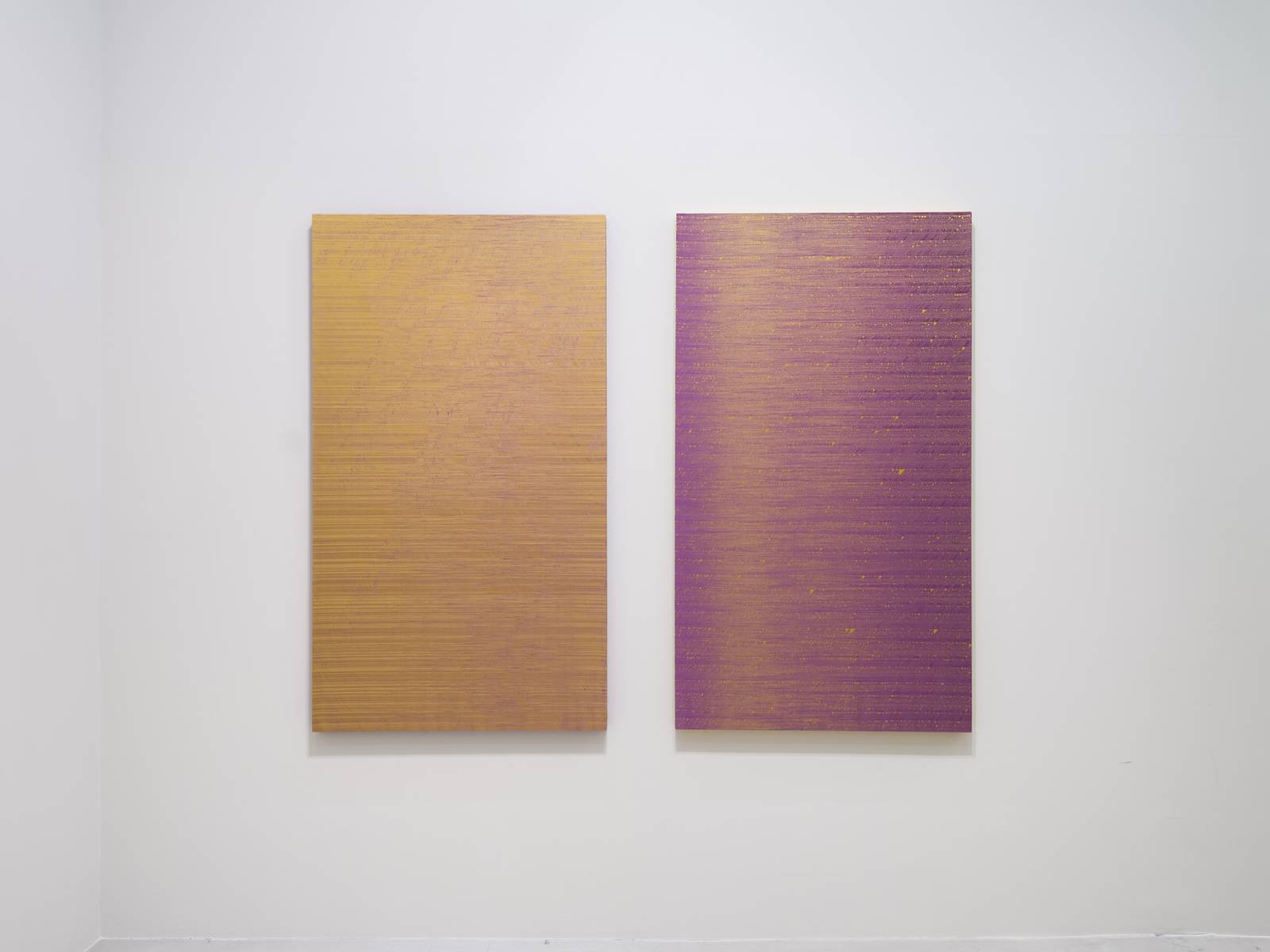Goro Murayama | Data Baroque
2 March - 11 May, 2024
Venue : Takuro Someya Contemporary Art
Takuro Someya Contemporary Art is pleased to present Goro Murayama’s solo exhibition Data Baroque. This is the artist’s second solo exhibition at TSCA, following a show held during the COVID-19 pandemic. Data Baroque features approximately 300 of the 700 drawings in Murayama’s series Data Baroque – A Thousand Drawings for Machine Learning., which is the starting point for a project that will be exhibited in Remembrance beyond images opening at the Tokyo Photographic Art Museum on March 1.
Murayama has consistently garnered acclaim for his artistic practice, including in 2009 when the Museum of Contemporary Art Tokyo acquired one of his works while he was still a student at Tokyo University of the Arts. He is renowned for his interdisciplinary approach influenced by science and technology and creates drawings and paintings that embody the processes and patterns of self-organization, driven by a fundamental inquiry into the emergence of the world. Murayama’s practice explores the possibilities of human creativity and is developed through his interrelationship with external environments and systems. His use of mathematical models, including cellular automaton and the golden ratio, is closely tied with numerous art historical developments, including the burgeoning genre of generative art. In recent years, Murayama presented the project Painting Folding 2.0 at ICC Annual 2022: Life/Likeness to the praise of leading experts in various fields. In this project, Murayama created three-dimensional models of his own “woven paintings,” which reflect both the regularity of protein structures and the material properties of hemp fibers, then used these AI-mediated models to reverse engineer—that is, to manually design—possible amino acid sequences for new protein structures that could theoretically exist in the natural world. Painting Folding 2.0 was developed from a series made for Painting Folding (2022), Murayama’s first solo exhibition at TSCA, that referenced the three-dimensional structure of proteins relevant to the viral composition of COVID-19.
This exhibition is a comprehensive survey of a series of roughly 700 drawings created over the course of a year as a dataset for AI, part of a broader project that will examine the development of Murayama’s work as it organizes, at times complexly, in the course of mutual learning with AI. Murayama offers the title Data Baroque in anticipation of an age of human ingenuity in which new kinds of data must be created in order to teach highly advanced AI. Present-day discourse about the dawn of the AI age is often shadowed by pessimism about the future obsolescence of humans. Yet, just as birds decorate themselves and perform for the world in order to attract mates, perhaps an age in which humans create “ornamental” data for AI will also see the preservation of human creativity through these rich and beautiful forms of data.
The drawings showcased here feature Murayama’s signature simple yet lively strokes. The greater the diversity and intricacy of their patterns, the more likely they are to teach an AI how to generate drawings with more human-like qualities. Through an engagement with science and AI, Murayama’s practice is an exploration from the realm of the arts of just how much the artist can continually evolve his own modes of expression. As technology advances and our world grows increasingly rational and systemized, how can we collaborate with and leverage these advancements to explore new possibilities, rather than becoming assimilated into them? Murayama’s approach presented in this exhibition invites us to open our minds to such questions.
Takuro Someya Contemporary Art
Editorial Input by Natsuki Iwadare
Translation by Eriko Ikeda Kay
Data Baroque
Will the impact of artificial intelligence on human life become a pressing issue within the realm of artistic creation, too? Already, AI is capable of generating imitations based on catalogues of humanmade art. These AI-produced works are increasingly regarded as art, with AI even substituting for specific steps of existing production processes. Yet, looking at these AI creations, there is an undeniable sense that something is lacking. Is AI inherently deficient in the concept of art, or are we merely awaiting a technological breakthrough?
Let’s consider the connection between AI and board games. Games like chess, go, and shogi have defined rules, finite states, and clear outcomes. Machines trained on vast datasets of past games are purportedly capable of predicting the best possible move at every turn, forecasting several hundred million plays. Undoubtedly, professional players who train with such machines possess a different understanding of the game than in the past. Expert players are said to intuitively grasp the state of a game as a two-dimensional “shape.” Combining this human instinct with the immense volume of AI’s predictive calculations, the timescale of a player’s cognitive ability expands exponentially. But what exactly is data when it comes to the production of art?
For simplicity, let’s break down the categories of artistic data into the production process, the artwork itself, and the critical context. Among these, data on individual production processes is glaringly lacking. Artists themselves are often to blame for concealing this information until the waves of history wash it away. Yet without insight into the production process, which embodies the individual artist’s perspective, AI is limited to perceiving art only as something to observe. It is akin to playing a game of go or shogi without memory of previous games. Art is not only about looking—it is also about creation, which means that data on the various individual production processes is, in fact, essential.
Unlike games, art has no explicit rules, no finite states, or obvious wins and losses. Then, what kinds of production processes should be recorded? In this series, I employ what I consider a rudimentary method of drawing, wherein a pattern is composed through the repetition of two recursive strokes. Each drawing adheres to a consistent format, with every stroke meticulously recorded as a photograph. Since machine learning achieves greater accuracy with larger datasets, I aimed to create 1,000 drawings. It was a monumental task, and the order of the production process itself changed. Unlike AI, which relies on a single algorithm to generate each drawing, my process inscribes the emergence and gradual development of patterns. Mapped through this repetition is the progression from visual expression to natural language.
Indeed, the pivotal moment of the AI age is already upon us. But rather than simply utilizing AI within our existing framework, humans are actively forging new forms of data to more authentically reflect reality and, in so doing, delving into a new domain of realness. Perhaps we can call this moment the “Age of Data Baroque.”
Goro Murayama
Translation by Eriko Ikeda Kay
Goro Murayama
Biography
Born in 1983 in Tokyo. Artist. Ph.D. in Fine Art. Murayama, who studied painting, explores the temporality and emergence of human acts of creation (poiesis) within the theoretical frameworks of biological systems and the philosophy of science. As seen in his representative series Woven Paintings, Murayama expresses the processes and patterns of self-organization through his drawings and paintings. In recent years, Murayama has extended his artistic endeavors by collaborating with scientists on AI pattern recognition and generation. These collaborations aim to deepen human understanding of and sensitivity towards artificial intelligence.
In 2010, Murayama received the shiseido art egg prize. From 2010 to 2011, he attended the MA Fine Art program at Chelsea College of Arts at the University of Arts London as an exchange student, and in 2015, he received his Ph.D. in Oil Painting from the Tokyo University of the Arts Graduate School of Fine Arts. From 2015 to 2017, Murayama was a visiting researcher in the Global World/Intercultural Philosophy course at the University of Vienna as a participant in the Program of Overseas Study for Upcoming Artists, sponsored by the Japanese government’s Agency for Cultural Affairs. Murayama is currently a Guest Associate Professor of Contemporary Thought and Philosophy at the University of Tokyo and a Part-time Lecturer in the Department of Imaging Arts and Sciences at Musashino Art University and the Graduate School of Tohoku University of Art & Design.
Selected Exhibitions
2024
Remembrance beyond images, Tokyo Photographic Art Museum, Japan
2023
Go for Kogei, Toyama, Japan
2022
ICC Annual: Life/Likeness, NTT InterCommunication Center, Tokyo, Japan
Fuji Textile Week 2022, Fujiyoshida, Japan
Art Setouchi, Ogijima Island, Japan (2019, 2022)
Drawings – Plurality, Parco Museum Tokyo, Japan
2020
Painting, Folding, Takuro Someya Contemporary Art, Tokyo, Japan
2019
Aichi Triennale: Taming Y/Our Passion, Aichi Prefectural Museum of Art, Nagoya, Japan
L’homme qui marche: Verkörperung des Sperrigen, Kunsthalle Bielefeld, Germany
The Extended Mind, Talbot Rice Gallery, Edinburgh, Scotland
DOMANI: The Art of Tomorrow, National Art Center, Tokyo, Japan
2018
Emergence of Order, Daiwa Foundation Japan House, London, England
2016
Simulational Poiesis, Spektakel, Vienna, Austria
2014
Tokyo University of the Arts Doctoral Program Final Exhibition, The University Art Museum, Tokyo, Japan
2013
The Vision of Contemporary Art, Ueno Royal Museum, Tokyo, Japan
Generating Visuals – Inspiring Circuits, Takuro Someya Contemporary Art, Kashiwa, Japan
2011
Stratosphere vol. 6 Tracing the “Self” Goro Murayama, gallery αM, Tokyo, Japan
TRANS COMPLEX – The Painting in the Age of Information Technology, Kyoto Art Center, Japan
2010
The re-enchantment of painting system, shiseido art egg, Shiseido Gallery, Tokyo, Japan
2009
MOT Collection – MOT Field of Dreams, Museum of Contemporary Art, Tokyo, Japan
[Exhibition Details]
Goro Murayama | Data Baroque
Date: Saturday, March 2, 2024 – Saturday, May 11 2024 *The exhibition period has been extended
Reception: 3pm March 2, 2024 *The artist will be at the gallery
Open: Tues – Sat 11:00 a.m. – 6:00 p.m.
Closed: Sun, Mon, and National Holidays
Location: Takuro Someya Contemporary Art
TSCA 3F TERRADA Art Complex I 1-33-10 Higashi-Shinagawa Shinagawa-ku Tokyo 140-0002
TEL 03-6712-9887 |FAX 03-4578-0318 |E-MAIL: gallery@tsca.jp


